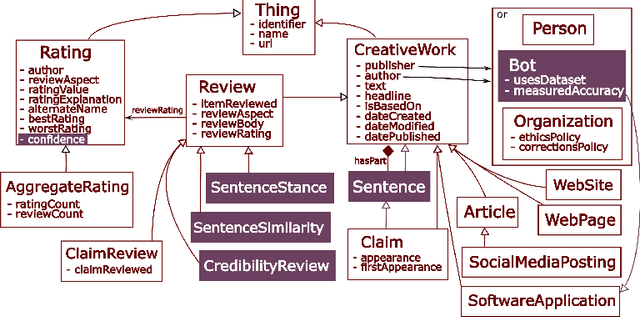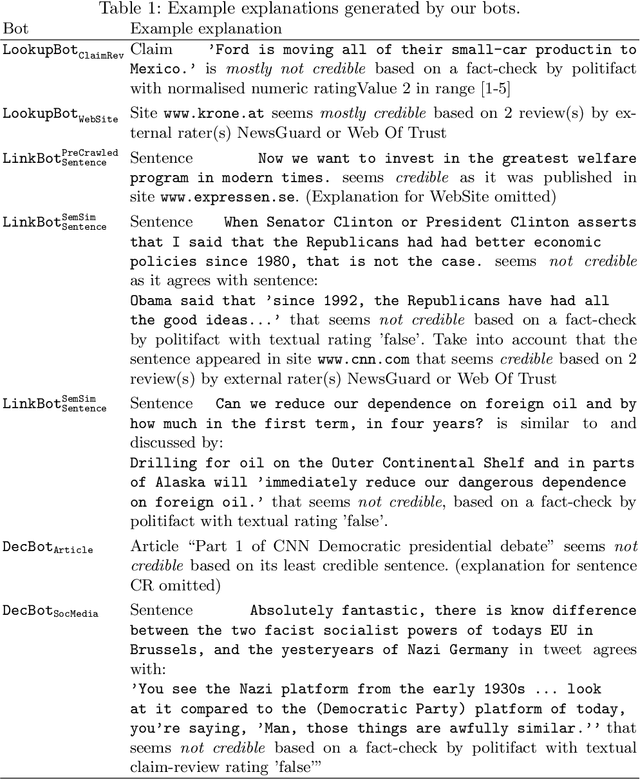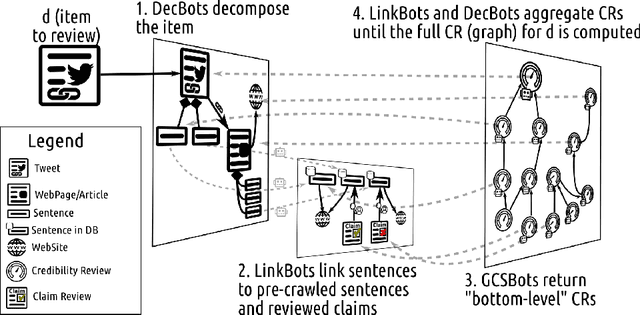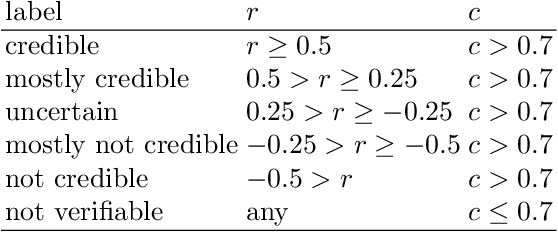Linked Credibility Reviews for Explainable Misinformation Detection
Paper and Code
Aug 28, 2020



In recent years, misinformation on the Web has become increasingly rampant. The research community has responded by proposing systems and challenges, which are beginning to be useful for (various subtasks of) detecting misinformation. However, most proposed systems are based on deep learning techniques which are fine-tuned to specific domains, are difficult to interpret and produce results which are not machine readable. This limits their applicability and adoption as they can only be used by a select expert audience in very specific settings. In this paper we propose an architecture based on a core concept of Credibility Reviews (CRs) that can be used to build networks of distributed bots that collaborate for misinformation detection. The CRs serve as building blocks to compose graphs of (i) web content, (ii) existing credibility signals --fact-checked claims and reputation reviews of websites--, and (iii) automatically computed reviews. We implement this architecture on top of lightweight extensions to Schema.org and services providing generic NLP tasks for semantic similarity and stance detection. Evaluations on existing datasets of social-media posts, fake news and political speeches demonstrates several advantages over existing systems: extensibility, domain-independence, composability, explainability and transparency via provenance. Furthermore, we obtain competitive results without requiring finetuning and establish a new state of the art on the Clef'18 CheckThat! Factuality task.
 Add to Chrome
Add to Chrome Add to Firefox
Add to Firefox Add to Edge
Add to Edge